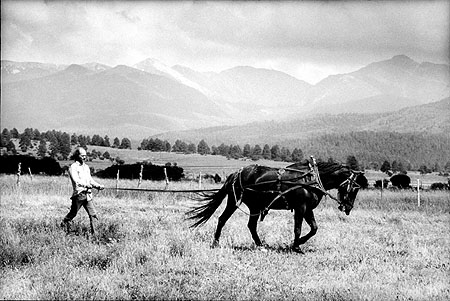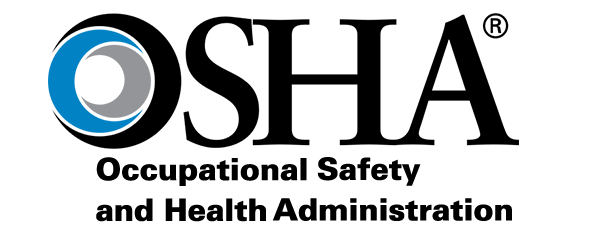
This Day in Labor History: May 1, 1943. FDR authorizes the Secretary of the Interior to seize the nation’s coal mines after the United Mine Workers of America refused National War Labor Board arbitration. Let's talk about the government stopping strikes in World War II! 

This incident demonstrated both the intransigence of UMWA head John L. Lewis to state power and the limited tolerance even the Democratic coalition at labor’s peak would have for unions acting outside of strict boundaries.
To say the least, John L. Lewis was a complex man. No one had done more in all of American history to organize the American working classes through the creation of the CIO.
At the same time, Lewis almost immediately turned with great hatred against Franklin Roosevelt, who signed the laws allowing the CIO unions to thrive and staffing the new National Labor Relations Board with pro-union appointees.
This life-long Republican and staunch anti-communist hired hundreds of communist organizers to bring the American workforce under union representation.
This man who did so much to democratize the American workplace ran his union like an utter tyrant, brooking absolutely no opposition.
And after Roosevelt was elected in 1940 with Lewis working as hard as he could for Wendell Willkie, when the rest of the CIO and the vast majority of American workers went all in for FDR, Lewis resigned from the CIO and pulled his UMWA out of the federation.
When World War II began, a major concern of the government was that workers not strike and stop war production.
Of course, the decade leading up to the war was the greatest period of sustained striking in American history and the legitimization of unions through the government had not stopped this. So the Roosevelt administration brought in companies and unions and made a deal.
FDR would create the National War Labor Board. The NWLB had 12 members–four representatives of business, four of organized labor, and four named by the federal government.
It guaranteed that all workers would pay dues in unionized companies, called “maintenance of membership,” which led to a forty percent increase in union dues over the period of the war, stabilizing CIO finances for the first time.
Union membership peaked at 35.4 percent of the nation’s workforce in 1945. Corporations had to agree to mandatory arbitration of all labor disputes while unions agreed not to strike during the war. Unions jumped at it.
Sidney Hillman became the CIO’s man in the White House, to the extent that according to Thomas Dewey, FDR had to “clear it with Sidney” in 1944 before choosing Truman as his VP candidate.
That hardly meant that everything was easy. There were thousands of little wildcat strikes (unauthorized) during the war, largely over shopfloor power and over the fact that despite wage and price controls, inflation was eating up the increased wages workers made and more.
Remember, these were workers who largely had no money since the 1920s, if they did then. There was an enormous hunger by workers to consume.
But by and large, the maintenance of membership clause meant that unions were going to keep workers disciplined. Plus, the workers wanted to win the war anyway.
But the United Mine Workers of America didn’t need any maintenance of membership clauses. John L. Lewis had those mines organized by 1943. As far as he was concerned, nothing mattered more than his workers, including winning World War II.
So he basically told FDR to go roll his wheelchair off a cliff. The UMWA was very angry over the lack of wage increases to match inflation. So it moved toward striking to protest this.
It had a lot of power, if it could use it. After all, what was more important than coal in winning the war? After all, it fueled our battleships. But would the government allow this? There were many small strikes throughout in 1943.
In fact, 69 percent of the man hours lost to strikes in 1943 came from the coal industry. Lewis’ own actions to some extent had spurred this. After raising UMWA dues by fifty percent, workers were angry.
Lewis told them to take it out on the government that wouldn’t let them make the money to pay those dues. That had started in 1942.
For the first few months of 1943, Lewis threatened to strike, trying to cajole the government into getting the mines of the so-called Little Steel formula to determine industry wages.
Finally, Lewis brought his workers out, briefly, at the end of April, refusing to submit to National War Labor Board arbitration.
FDR felt he had no choice but to prepare to seize the mines. He issued Executive Order 9340, doing this very thing. This brought the strike to a swift closure, but Lewis had the UMWA go on yet another strike in June.
In November, a full nationalization of the mines did briefly take place, although many miners simply refused to work. When this ended, the NWLB did in fact give the miners a $1.50 a day raise. Not quite the $2 the UMWA demanded, but it proved Lewis’ strategy was effective.
For miners, Lewis was a hero standing up for their rights against all enemies, including FDR. On the other hand, conservatives called for striking miners to be drafted.
This action led to Congress passing the Smith-Connally Act in June, allowing the federal government to seize any operation that went on strike during wartime and prohibit unions from making contributions to federal elections. FDR vetoed it.
Congress passed it over his veto, laying the groundwork for Taft-Hartley after the war and sharply demonstrated the very limited power unions had in this country, even at their height.
FDR’s veto did not stop from using the act soon after to bust the Philadelphia Transit Strike the next year.
Wasn't that a fun May Day story? So romantic and inspirational........
Back Monday to discuss labor in the countercultural communes and intentional communities.
• • •
Missing some Tweet in this thread? You can try to
force a refresh





